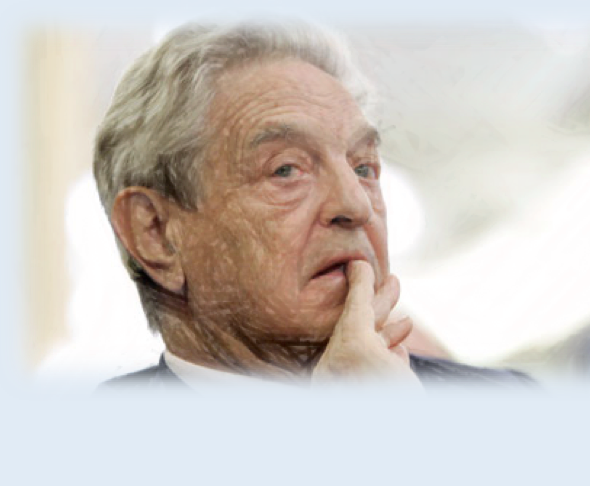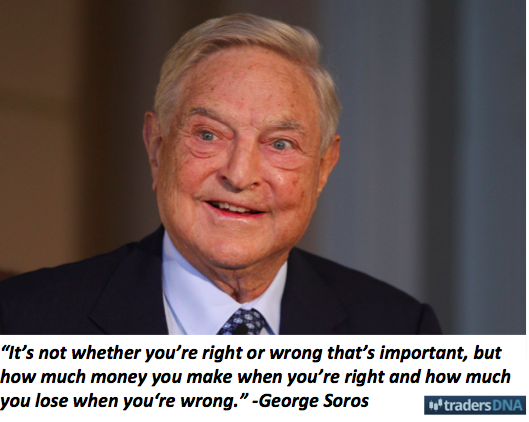‘I’m only rich because I know when I’m wrong. I basically have survived by recognizing my mistakes.’ – George Soros.
George Soros is the world’s richest hedge fund billionaire with a net worth of $24.2 billion, according to Forbes ranking 2015. He holds 29th position in the list of the World’s Billionaires.
Soros, now 84, is a self-made billionaire. He had to escape to London from Hungary during Nazi rule. While working as a railway porter and a waiter, he studied at the London School of Economics. Then he moved to New York. After getting some experience in Wall Street, he established his own hedge fund in 1969. Very soon he became a successful model for global hedge fund managers to exploit economic environment to make big money.
Economic crises often offer the best opportunities for currency traders. Soros’ strategy is to spot upcoming economical vulnerability of a country and then go short on its currency right before the fall happens.
If any currency is artificially maintained by the central bank or the government, there is a highest potential of currency fluctuations in near future. When people are selling, the bank continues to buy the currency to maintain the fixed rate. This artificial currency balance becomes vulnerable to speculations and cannot fight against the market forces for long. And the currency collapses. Soros has skill to anticipate this crisis well in advance and he shorts the currency to make big money.
This is exactly what Soros did very recently with Japanese Yen in 2013. With 2½ decades of economic stagnation and deflation, Japan was struggling to emerge from the recession and attract investments from global financial markets. The government came out with fiscal stimulus package worth 10.3 trillion yen in 2012. This was followed by the second fiscal boost of 5.5 trillion yen in April 2014 and the third package of 3.5 trillion yen ($29 billion) in December 2014.
When Japanese government was considering to depreciate Yen to boost the economy and attract investors, Soros could catch the signal and did a large currency bet by shorting the Japanese Yen. He made a cool $1.4bn profit. This pushed his total personal earning to $4 billion.This placed him near the top of the Forbes’ list of highest earning hedge fund managers 2015 with Ray Dalio and next only to Steve Cohen.
This strategy was not new to Soros. It was used in 1977 when he could foresee a possibility that the Thai Baht could go down. So he went short on the baht, by going long on USD/THB using forward contracts. Ultimately Thai Bhat crash which triggered Asian financial crisis also.But Soros earned $790 Million in this process.
The same technique was also similar to that used in 1992 by him betting on the inevitable devaluation of the British pound. This made George Soros to be known as ‘the man who broke the Bank of England’; he had earned $1.1 billion overnight in 1992. He had made a successful bet that the British pound would significantly depreciate.
Gradually he developed a reputation as an investment fortune-teller for successful bets on currencies, gold and real estate.
Though Soros has been a highly successful investor, he has not been immune to failures. Not all his investment decisions were always correct and not every speculation of George Soros worked in his favor. But Soros used to cut his losses promptly. He always analyzing them to find the reasons for losses. As Soros himself says, ‘Once we realize that imperfect understanding is the human condition there is no shame in being wrong, only in failing to correct our mistakes.’
George Soros’ philosophy, known as reflexivity, states that people and the systems they create will always make mistakes. Soros also did some big mistakes. But he did made billions also by amending himself with every mistake. He increased his fortune by reviewing and learning from his mistakes.
Let us have a glance at some of his big mistakes.
First, in 1987, George Soros prediction that the U.S. markets would continue to rise went wrong. The stock-market crashed and Soros’ fund lost $300 million.
Second in 1994, he did a wrong bet on the Japanese yen’s value relative to the dollar based on ongoing trade talks between the United States and Japan. The negotiation collapsed and Soros suffered a $600 million loss in a single day.
Fourth, he lost $700 million during the 1999 technology bubble when he bet on a decline. Stung by the loss, he bought big in anticipation of a rise. When the market finally crashed, he lost $3 billion. Soros realized his days of large ‘macro’ bets were over and he decided to focus on lower risk strategies.
Fifth, recently in 2013, Soros bought around 8% stake in J.C. Penney after a change in management anticipating that would bring a turn around. But this turn around did not happen and the share continued to fall. Instead of waiting for the price to recover his cost, Soros sold entire shares within a few months with a 50% loss.
Though Soros did many mistakes over the years, he continued to survive in the market with his resilience and quick recovery from the losses. The key to Soros’ success is having a process that limits how much you lose when you are wrong.
George Soros is known as an investment fortune-teller for successful bets on currencies, gold and real estate. He has followed his reflexivity philosophy consistently and utilized his skill to foresee and bet on upcoming economic crisis. His net worth continues to grow. And today Soros is the world’s richest hedge fund manager.
Kanchan Kumar is an experienced finance professional and has worked as an Executive Director and Advisor with the MNCs. He is a former banker with two decades of working experience with a Financial Institution. He is a rank holder in MBA (Finance) and Gold Medallist in MS (Statistics). He has passion for research and has also taught at a University. He writes on Global Economy, Finance and Market.










